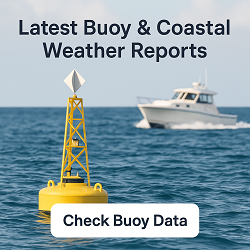Pecos, TX Weather Forecast and Current Conditions (79772)
Current Conditions From Nearby Local Station

Feels Like 72°F
at
Current Conditions From Nearby Local Station

Feels Like 72°F
at
Point Forecast at a Glance







This Date in Weather History
1752 - The second severe hurricane in two weeks hit the Carolinas. The Onslow County Courthouse was destroyed along with all its records, and Beacon Island disappeared.
More on this and other weather history
Pecos 7 Day Weather Forecast Details
Tuesday Sep 30

Night: Mostly clear. Low around 57, with temperatures rising to around 61 overnight. East wind around 5 mph.
Wednesday Oct 1

Day: Sunny, with a high near 92. East wind 0 to 5 mph.

Night: Mostly clear, with a low around 59. Southeast wind 5 to 10 mph.
Thursday Oct 2

Day: Sunny, with a high near 94. Southeast wind 0 to 5 mph.

Night: Mostly clear, with a low around 60. Southeast wind around 5 mph.
Friday Oct 3

Day: Sunny, with a high near 92.

Night: Clear, with a low around 61.
Saturday Oct 4

Day: Sunny, with a high near 94.

Night: Mostly clear, with a low around 63.
Sunday Oct 5

Day: Sunny, with a high near 93.

Night: Mostly clear, with a low around 63.
Monday Oct 6

Day: Sunny, with a high near 91.

Night: Mostly clear, with a low around 63.
Tuesday Oct 7

Day: Sunny, with a high near 89.
Sun & Moon Monthly
Sunrise 7:48 AM
Sunset 7:41 PM
Last Light 8:06 PM
Moonset 12:51 AM

Contiguous United States Extremes
Tue's High Temperature
99 at 16 Miles Southwest Of Tecopa, CA and 4 Miles Northwest Of Topock, AZ
Tue's Low Temperature
28 at 5 Miles West-southwest Of Hartsel, CO and 9 Miles East-southeast Of Creede, CO and 7 Miles East-northeast Of Toponas, CO
Weather Folklore
Cumulus clouds in a clear blue sky, it will likely rain.
Current subscribers - login to your ClearSky account
About Pecos, Texas
Pecos ( PAY-kəs) is the largest city in and the county seat of Reeves County, Texas, United States. It is in the valley on the west bank of the Pecos River at the eastern edge of the Chihuahuan Desert, in the Trans-Pecos region of West Texas and just south of New Mexico's border. Its population was 12,916 at the 2020 census. On January 24, 2012, Pecos City appeared on the Forbes 400 as the second-fastest growing small town in the United States. The city is a regional commercial center for ranching, oil and gas production, and agriculture. The city is most recognized for its association with the local cultivation of cantaloupes. Pecos claims to be the site of the world's first rodeo on July 4, 1883.
Content from Wikipedia, licensed under CC BY-SA 3.0.
How We Provide Better Local Weather
Current conditions: We use the nearest available station to your location - including professional MESONET/MADIS and local weather stations - often miles closer than regional airports.
Forecasts: National Weather Service point forecasts predict for your specific area, not broad regional zones, making them far more relevant to your location.

